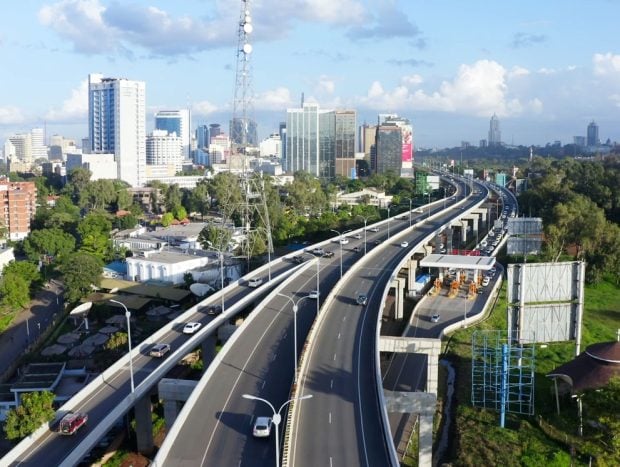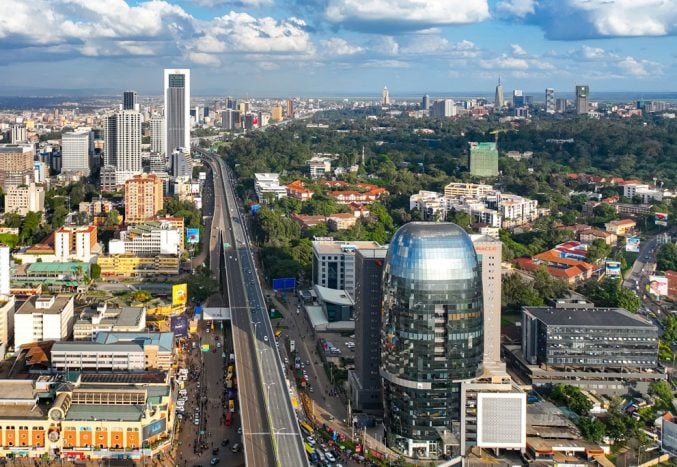The Expressway Effect: How New Infrastructure (Roads, Malls) is Reshaping Property Values in Nairobi
If you’ve been in Nairobi for more than a few years, you remember what it was like. You remember budgeting two hours for a trip that should have taken twenty minutes. You remember the city’s geography being defined not by kilometers, but by the chaotic, unpredictable nature of its traffic. That reality is, in a word, changing.
The towering columns of the Nairobi Expressway, the sprawling, strategic network of bypasses, and the spectacular rise of ‘all-in-one’ lifestyle destinations like Two Rivers Mall or The Hub in Karen are more than just concrete, steel, and glass. They are powerful economic engines, fundamentally reshaping the DNA of our city. They are redefining what it means to live, work, and invest in Nairobi.
For any property owner, investor, or prospective homebuyer, this visible transformation leads to one critical question: “What does all this new infrastructure mean for the value of my property?”
The answer is simple, yet profound: everything.
Accessibility has become the new gold standard in Nairobi’s real estate market. These massive projects are shrinking the city, turning once-distant suburbs into prime commuter zones and creating entirely new commercial hotspots from scratch. As a leading valuation firm, we at Danco Limited don’t just observe this trend; we quantify it daily. The “Expressway Effect” is real, and it is impacting your asset’s value, whether you’re aware of it or not.
Case Study 1: The Expressway: Shrinking the City, Expanding Value

The 27-kilometre Nairobi Expressway is the most dramatic and visible agent of this change. It has fundamentally altered the city’s time-and-distance equation. What was once a nightmarish, two-hour crawl from Mlolongo or Syokimau to Westlands is now a predictable, breezy 20-minute drive. This isn’t just a convenience; it’s an economic revolution for the entire corridor.
The impact on value was immediate and significant. Market analysis reveals that land and property prices in satellite towns directly serviced by the expressway – such as Syokimau, Mlolongo, and Athi River – have experienced a surge in demand, leading to appreciation as high as 35% in just a few years. This newfound accessibility has made these areas viable, even desirable, for professionals working in the CBD, Westlands, and even farther north.
But the ripple effect extends beyond these obvious towns. Consider an area like South C. It now finds itself in a uniquely strategic position, with hyper-fast access to both Jomo Kenyatta International Airport and the northern business hubs via the expressway. This has added a powerful new layer of demand to its existing appeal, boosting rental and purchase interest. For a professional valuer, this means we can no longer use a property sale from 2019 as a reliable comparable for a valuation today. The very market fundamentals have been rewritten. Our job at Danco Limited is to meticulously track these changes, isolating the premium that this new accessibility adds.
Case Study 2: The “Bypass Boom”: Unlocking New Frontiers
Long before the Expressway dominated the skyline, the “Bypass Boom” was already quietly redrawing Nairobi’s map. The Northern Bypass, for example, acted as a key, unlocking the immense potential of once-sleepy suburbs.
Let’s take Ruaka as a prime case study. Before the bypass connected Limuru Road to Kiambu Road and Thika Road, Ruaka was a semi-rural outpost. The completion of this artery transformed it into one of Nairobi’s most strategic and accessible residential hubs. The result has been nothing short of staggering. Property values haven’t just increased; they’ve multiplied. A plot that might have been KSh 800,000 a decade ago can now easily command over KSh 4 million.
This accessibility, combined with Ruaka’s proximity to the UN complex, Gigiri, and Westlands, triggered a high-density development boom. The skyline, once defined by trees, is now punctuated by modern apartment complexes. These buildings command high rental yields from young professionals and expatriates, all drawn by the promise of connectivity. This illustrates a core principle: infrastructure doesn’t just provide access, it creates the market for entirely new types of property development.
Case Study 3: The “Anchor Effect”: Malls as Micro-Cities

This wave of transformation isn’t just about roads. The development of large-scale, mixed-use destinations like Two Rivers Mall and The Hub in Karen has introduced the “Anchor Effect.” These are not merely shopping centres; they are meticulously planned “live-work-play” ecosystems.
These destinations act as powerful anchors for property values in the surrounding areas. They offer a curated, secure, and world-class environment with restaurants, entertainment, green spaces, offices, and residential components all in one place. Their very presence signals to the market that a neighbourhood is modern, convenient, and desirable.
Properties in adjacent communities – like Runda, Gigiri, and Karen – consequently command a premium. Residents have easy access to these unparalleled amenities, a luxury that adds tangible, quantifiable value to their homes. This is a classic example of a positive externality, where a large-scale commercial development directly increases the value of nearby residential properties. When valuing a home in Karen, for instance, a registered valuer must now consider “proximity to The Hub” as a distinct and positive variable, much as one would consider proximity to a good school.
Your Property’s Value is Not Static
In a dynamic, fast-evolving city like Nairobi, your property’s value is not a fixed number gathering dust in a filing cabinet. It is a living, breathing figure, constantly influenced by market forces you can see being built every day. The single biggest driver of that change is, and will continue to be, infrastructure.
Relying on an old valuation from three years ago or an informal “appraisal” from an agent means you are operating with outdated, inaccurate data. You could be under-insuring your most valuable asset, asking for far too little in a sale, or missing a prime investment opportunity right under your nose.
To understand the true, current market value of your property in this new landscape, you need more than just a guess. You need a professional, data-driven valuation from a team that understands how to read the city’s new map.
Ready to find out what your property is truly worth in today’s market?
[Contact Danco Limited today for a professional, data-driven valuation. We will analyze how Nairobi’s new developments have impacted your specific property, giving you the clarity and confidence you need to make your next move.]




